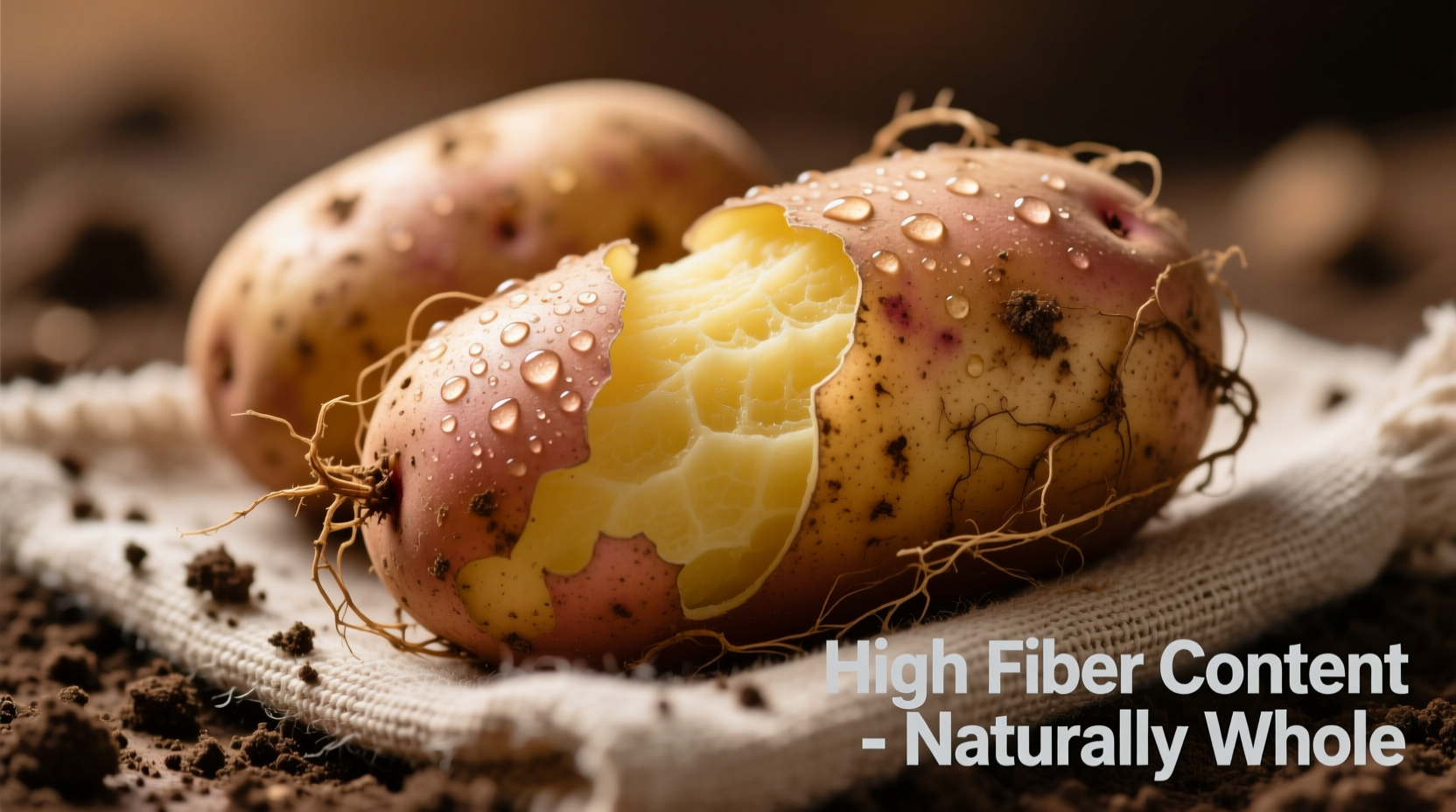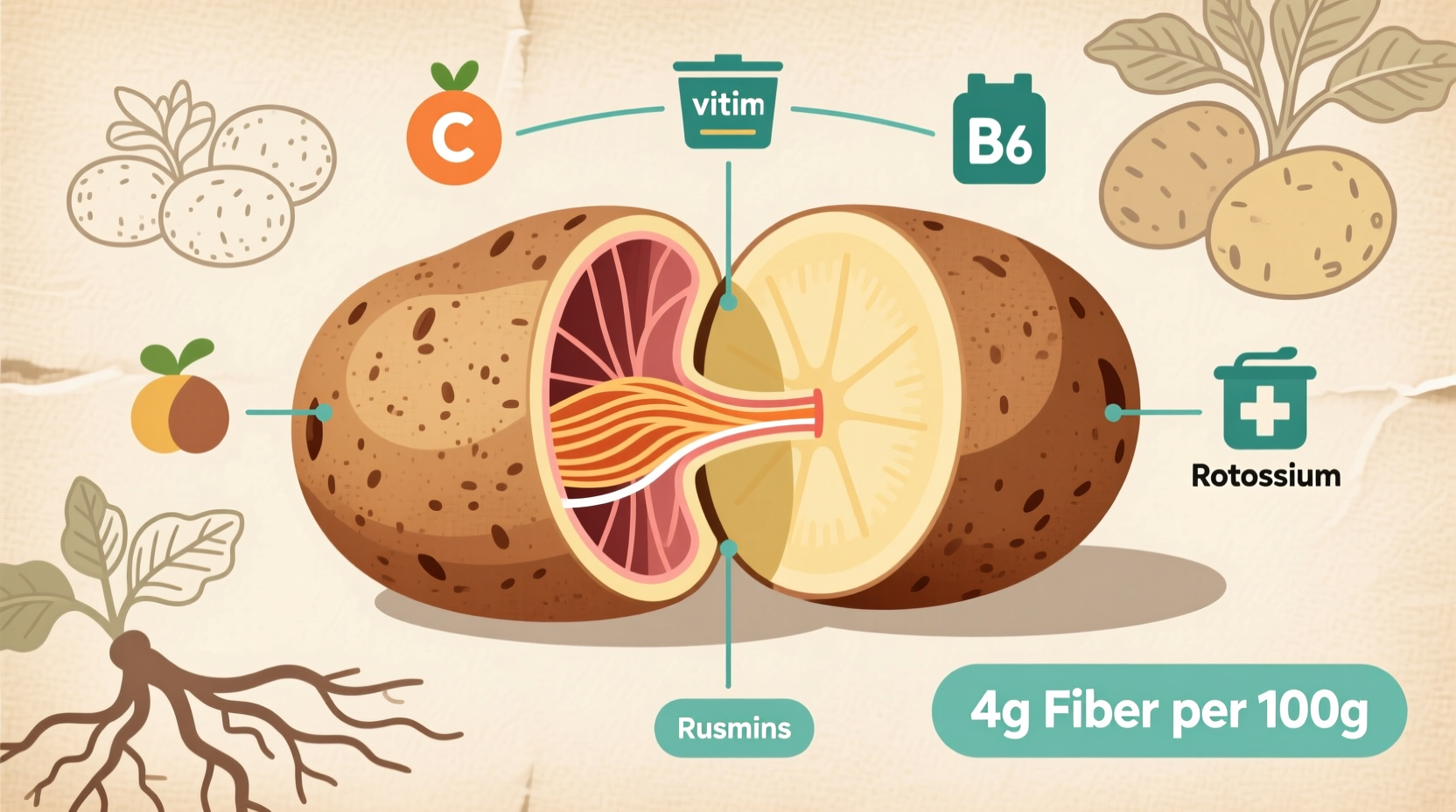Discover exactly how much fiber is in a potato and how preparation methods dramatically impact this nutritional benefit. Whether you're managing digestive health, controlling blood sugar, or simply optimizing your diet, understanding potato fiber content helps you make smarter food choices that align with your health goals.
Understanding Potato Fiber: What You Need to Know First
Most of a potato's fiber resides in its skin, which explains why peeled potatoes contain significantly less fiber. The USDA FoodData Central database confirms that leaving the skin on increases fiber content by nearly 75%. This fact alone transforms how you should approach potato preparation if maximizing fiber intake is your goal.
| Potato Type & Preparation | Weight (g) | Total Fiber (g) | % Daily Value |
|---|---|---|---|
| Russet potato with skin (medium) | 173 | 3.8 | 14% |
| Russet potato without skin | 138 | 2.2 | 8% |
| Sweet potato with skin | 130 | 4.0 | 14% |
| Red potato with skin | 150 | 3.0 | 11% |
| Mashed potatoes (prepared without skin) | 210 | 2.1 | 8% |
Data sourced from the USDA FoodData Central, the official U.S. government nutrition database, ensures these figures represent the most current and accurate measurements available.
Why Potato Fiber Matters for Your Health
Dietary fiber plays a crucial role in maintaining digestive health, regulating blood sugar levels, and supporting heart health. The Academy of Nutrition and Dietetics recommends adults consume 25-38 grams of fiber daily, yet most Americans get only about half that amount. Potatoes, particularly when consumed with their skin, offer a substantial contribution toward meeting these targets.
What many people don't realize is that potato fiber contains both soluble and insoluble varieties. Soluble fiber helps manage cholesterol and blood glucose, while insoluble fiber promotes regular bowel movements. This dual benefit makes potatoes a nutritionally versatile food choice when prepared correctly.

Maximizing Fiber from Your Potatoes: Practical Preparation Guide
Your cooking method dramatically affects how much fiber is in a potato. Consider these evidence-based preparation strategies:
- Always keep the skin on - As shown in our comparison table, skin contains approximately 75% more fiber than the flesh alone
- Avoid overcooking - Extended boiling can break down some fiber structure, though the effect is minimal compared to peeling
- Choose appropriate varieties - Russet and sweet potatoes generally contain more fiber than waxy varieties like Yukon Gold
- Pair with other high-fiber foods - Combine potatoes with vegetables, beans, or whole grains to create fiber-rich meals
Research published in the Journal of Food Composition and Analysis confirms that baking preserves slightly more fiber than boiling, though the difference is marginal compared to the impact of keeping the skin intact.
How Potato Fiber Compares to Other Common Foods
Understanding where potatoes stand among other fiber sources helps you make informed dietary choices. While not the highest fiber food available, potatoes offer a balanced nutritional profile that includes potassium, vitamin C, and complex carbohydrates alongside their fiber content.
For context, a medium apple with skin contains about 4.4g of fiber, while a half-cup of cooked lentils delivers approximately 7.8g. Potatoes fall in the middle range of fiber-dense foods, making them a valuable component of a varied diet rather than a primary fiber source.
What makes potatoes particularly valuable is their versatility and accessibility. Unlike some high-fiber foods that require special preparation or have strong flavors, potatoes integrate seamlessly into most meal plans while providing meaningful fiber contributions.
When Potatoes Make Sense for Your Fiber Goals
Not every situation calls for potatoes as your primary fiber source. Consider these context boundaries when planning your meals:
- For blood sugar management - Pair potatoes with protein and healthy fats to moderate glycemic impact while still benefiting from fiber
- For digestive health - Potatoes provide gentle fiber that's often better tolerated than high-bran foods during digestive recovery
- For weight management - The fiber and water content in potatoes promotes satiety, but portion control remains important
- For athletes - Potatoes offer both fiber and complex carbohydrates for sustained energy
The National Institutes of Health notes that fiber recommendations have evolved significantly over the past two decades, with current guidelines emphasizing variety in fiber sources rather than focusing on single high-fiber foods. This evolution supports including potatoes as part of a diverse fiber intake strategy.











 浙公网安备
33010002000092号
浙公网安备
33010002000092号 浙B2-20120091-4
浙B2-20120091-4